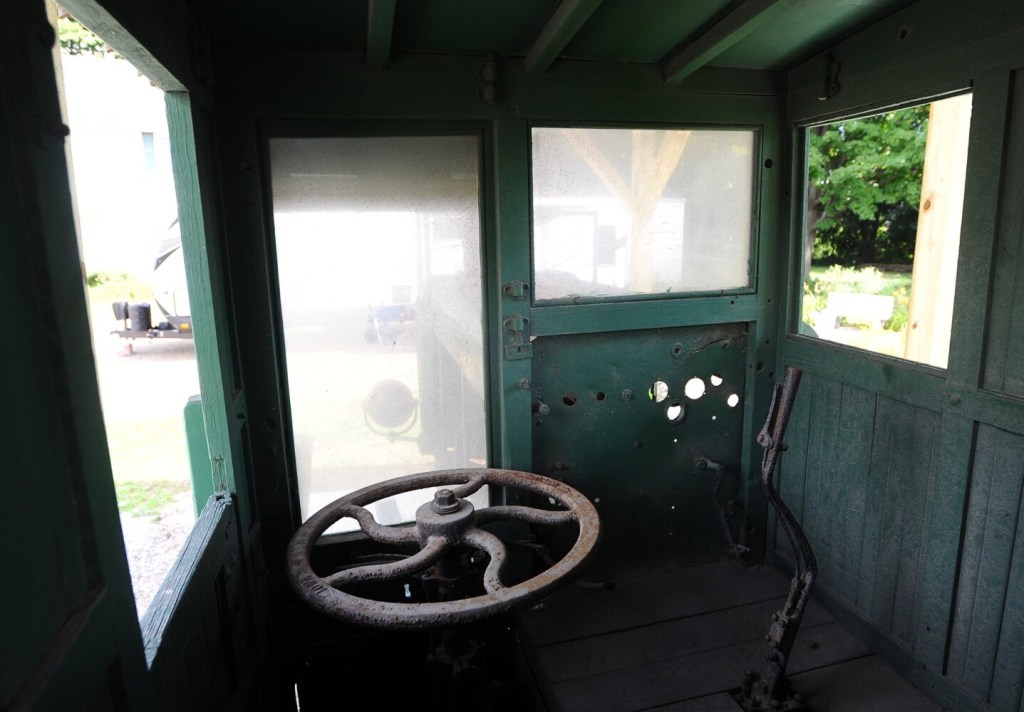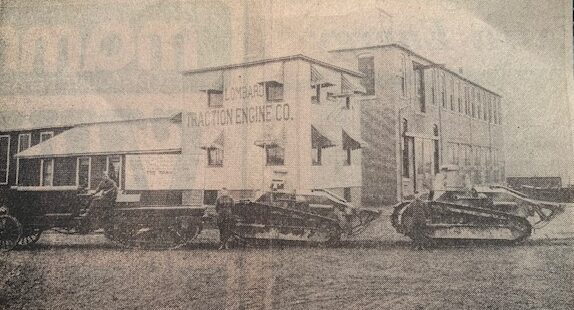WATERVILLE — The historic Lombard log hauler is in a new home on the grounds of the Waterville Historical Society’s Redington Museum on Silver Street after spending decades in a low visibility spot off Front Street downtown.
The log hauler, invented by Alvin O. Lombard of Waterville, was patented in 1901 and revolutionized the way the lumbering industry operated in Maine. Its concept of using a caterpillar tread, or continuous track for vehicle propulsion, was later used on army tanks in World War I, as well as for agricultural tractors and construction equipment after the war.

The Lombard Traction Engine Co., located near where Huhtamaki is now on College Avenue, manufactured 83 log haulers. According to the Maine Forest & Logging Museum website, they were constructed between 1900 and 1917 and most were used in Maine and New Hampshire, though several were shipped to some western states, as well as to Canada.
“Lombard licensed his patented track design to the Phoenix Company in Eau Claire, Wisconsin, which produced additional Phoenix log haulers,” the site says. “Many Lombard steam log haulers were recycled for scrap iron during World War II, and only 6 of the original 83 machines are known to still exist. Only 3 of these are in running condition.”
The hauler could pull up to 30o tons of logs and did the work of 50 horses. The log hauler on display in Waterville was discovered in the 1970s in the woods near Churchill Dam by Fred Prescott, Waterville’s code enforcement officer at the time, and pilot Kenneth Ireland, while they were on a fishing trip and saw it from the air, according to Morning Sentinel newspaper accounts.
The Breton family of Vassalboro restored the engine. In 1981 the machine was moved from Vassalboro to Front Street, near the Ticonic bridge that spans the Kennebec River between Waterville and Winslow.
But over the years, it became increasingly invisible, as trees and brush grew around it, traffic in the area increased in both volume and speed, and it was difficult for people to access it.
City Manager Michael Roy said Wednesday that talks had been in the works for about a year to find a suitable location for the log hauler. The Waterville Historical Society approached the city about moving it to the museum grounds at 62 B Silver St., and Roy said he thought it was a great idea. It was moved last month.
“I think the public works crew did a great job preparing the site and helping to coordinate the whole move,” Roy said. “It really looks nice where it is. We’re thankful that the Historical Society has made a place for it. I think it was a good example of cooperation all the way around.”

The steering wheel and driver’s compartment of a circa 1926 Lombard Log Hauler on Thursday at the Redington Museum in Waterville. Rich Abrahamson/Morning Sentinel Buy this Photo
At the museum Thursday morning, museum curator and caretaker Bryan Finnemore said he is delighted the log hauler is there. A steady stream of people have been driving it to see it, he said.
“I think it is the best place for it,” Finnemore said. “You couldn’t see it when it was by the bridge. There were not a lot of places to pull over and get out of your car and look at it. Here, we can take care of it, and people will be able to enjoy it for years.”
The museum itself is an historic house built in 1814. The museum is closed during the coronavirus pandemic, but Finnemore said the closure has allowed him and his wife, Bonny, to do a lot of spiffing up and he expects it will reopen in the spring of next year.
Meanwhile, the Northern New England Section of the American Society of Mechanical Engineers years ago designated the Lombard Steam Hauler as a National Historic Mechanical Engineers Landmark.
Lombard, who also invented a bark stripper, knot separator, pulp crusher and a steam-driven automobile, was born in Springfield, Maine in 1856. He moved to Waterville in 1895 and later lived in the historic Lombard House on Elm Street.
Now an apartment house, it is located across Appleton Street from the Waterville Public Library. In 1982, the house was entered on the National Register of Historic Places.
Built in 1908, the house remained in the Lombard family until 1964 and was remodeled into apartments in the 1940s.
Send questions/comments to the editors.







